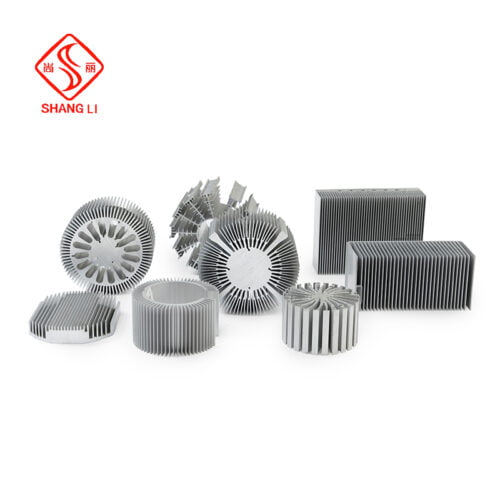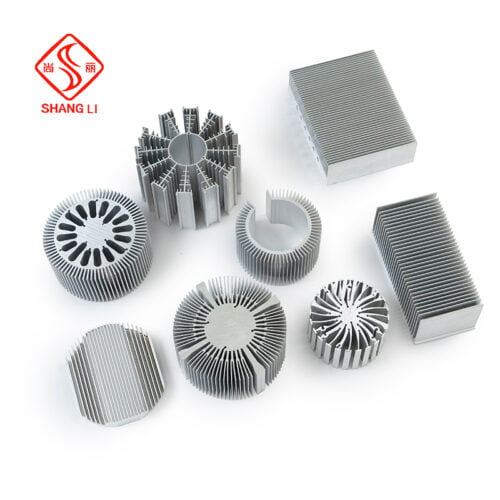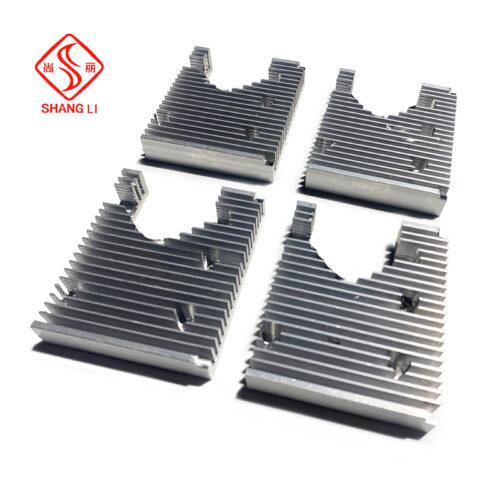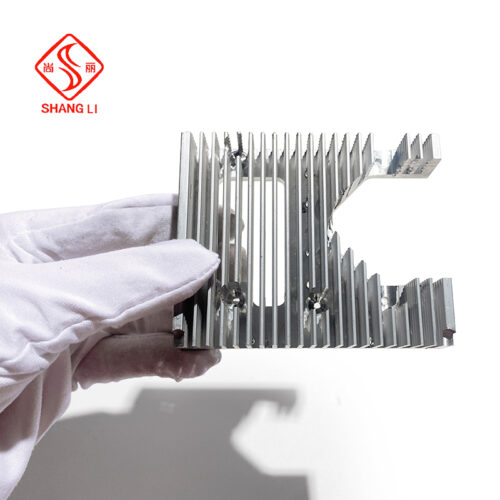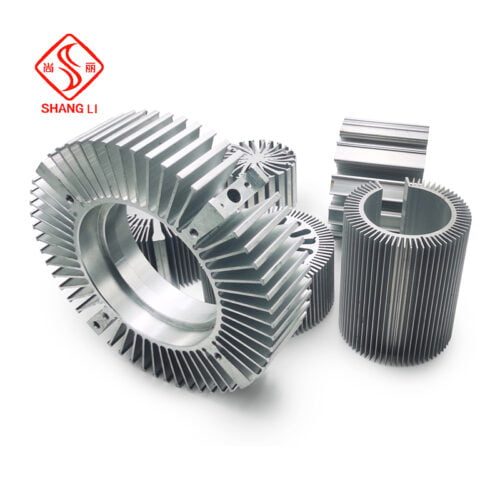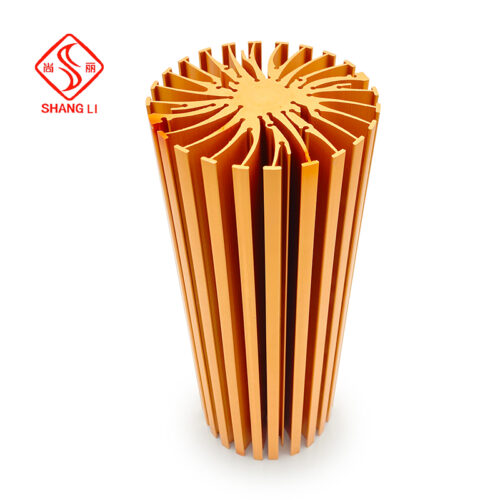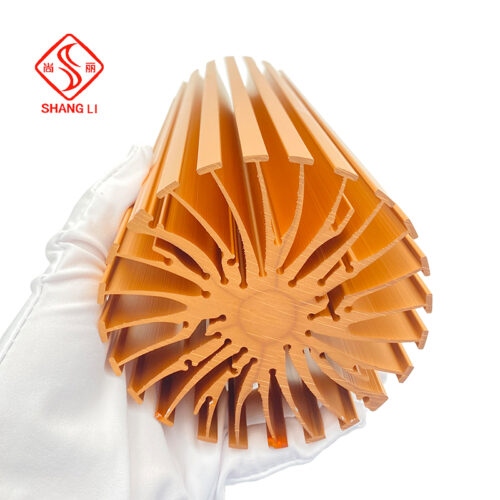Aluminum Heat sinks Decoded:From Material Properties to Core Thermal Design Logic
In modern electronic thermal management systems, aluminum heat sinks dominate as the optimal solution due to their unique properties. This analysis explores the core logic behind efficient heat dissipation through three dimensions: material science, structural design, and manufacturing processes.
🔬 I. Material Advantages: The Physics of Efficiency
1. Thermal Conductivity
Pure aluminum: 237 W/(m·K) – 5× higher than steel
Optimized alloys: 6063 aluminum (201 W/(m·K)) balances conductivity and strength
2. Lightweight & Cost Efficiency
Density: 2.7 g/cm³ (67% lighter than copper)
Material cost: 1/3 of copper with 40% lower processing energy
3. Surface Engineering
Anodization creates 5-25μm oxide layers, increasing emissivity from 0.05 to 0.8
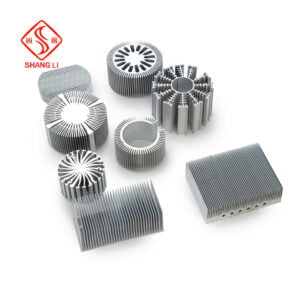
⚙️ II. Structural Design: Mastering Heat Transfer
1. Fin Optimization (CPU heat sink benchmark)
| Parameter | Optimal Range | Thermal Principle |
|---|---|---|
| Fin aspect ratio | 15:1 ~ 20:1 | Maximize surface area/volume |
| Fin thickness | 0.4-0.8mm | Balance conduction vs. airflow |
| Fin spacing | 1.5-2.5mm | Prevent boundary layer stacking |
2. Heat Pipe-Fin Coupling
Vapor chambers: Thermal conductivity up to 50,000 W/(m·K)
Reflow soldering: Contact thermal resistance <0.05°C/W
3. Aerodynamic Engineering
7°-12° fin tilt: Reduces air resistance by 30%
Variable spacing: Dense inlet (1.2mm) → open outlet (3mm) zones boost heat exchange 15%
🏭 III. Precision Manufacturing
1. Extrusion
5,500-ton presses form baseplates up to 1.8m wide
Mold flow design limits metal velocity variation to <5%
2. Skiving Technology
Machines 100+ ultra-thin fins (0.3mm) from solid aluminum
±0.05mm heat pipe groove precision ensures >85% contact
3. Surface Enhancement
Micro-arc oxidation: 20μm ceramic layer (1500 HV hardness)
Nano-coatings: Graphene boosts radiation efficiency 40%
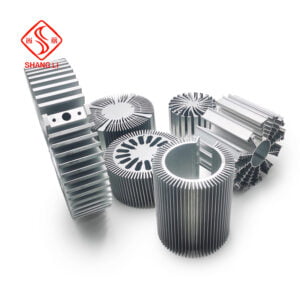

🌡️ IV. Case Study: EV IGBT Module Cooling
Traditional Design
Die-cast aluminum housing + thermal paste
Thermal resistance: 0.25°C/W
Optimized Solution
Vapor chamber + microchannel aluminum substrate
Thermal resistance: 0.08°C/W (68% reduction)
32°C junction temperature drop → 3× longer lifespan
🚀 V. Cutting-Edge Breakthroughs
3D-Printed Topology
Bio-inspired honeycomb structures: 50% better thermal efficiency per gram
Creates curved flow paths impossible with traditional methods
Phase Change Material (PCM) Integration
Metal foam/PCM composites fill fin gaps
400% higher transient heat absorption
Active Thermal Management
NTC sensor-controlled variable-speed systems
Maintains <5°C gradient with 30% lower power
💎 Core Design Philosophy: Thermal Resistance Warfare
The evolution of aluminum heat sinks targets three thermal barriers:
Contact resistance → Nanoscale surface finishing + advanced bonding
Conduction resistance → High-κ materials + structural innovation
Convection resistance → Fluid dynamics optimization
For 300W/cm² thermal densities (e.g., AI chips), liquid metal-cooled aluminum microneedle arrays emerge as the frontier. Intel Labs confirm: GaInSn-filled micro-pin structures manage 10,000W/cm² heat flux.
The ultimate goal: Build the most efficient “thermal highway” within constrained spaces. Aluminum – with its innate conductivity and adaptability – continues to redefine cooling performance boundaries.



